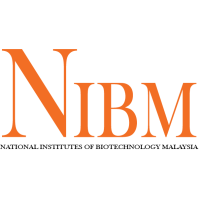Palm kernel cake protein was hydrolyzed with different proteases namely papain, bromelain, subtilisin, flavourzyme, trypsin, chymotrypsin, and pepsin to generate different protein hydrolysates. Peptide content and iron‐chelating activity of each hydrolysate were evaluated using O‐phthaldialdehyde‐based spectrophotometric method and ferrozine‐based colorimetric assay, respectively. The results revealed a positive correlation between peptide contents and iron‐chelating activities of the protein hydrolysates. Protein hydrolysate generated by papain exhibited the highest peptide content of 10.5 mM and highest iron‐chelating activity of 64.8% compared with the other hydrolysates. Profiling of the papain‐generated hydrolysate by reverse phase high performance liquid chromatography fractionation indicated a direct association between peptide content and iron‐chelating activity in most of the fractions. Further fractionation using isoelectric focusing also revealed that protein hydrolysate with basic and neutral isoelectric point (pI) had the highest iron‐chelating activity, although a few fractions in the acidic range also exhibited good metal chelating potential. After identification and synthesis of papain‐generated peptides, GGIF and YLLLK showed among the highest iron‐chelating activities of 56% and 53%, whereas their IC50 were 1.4 and 0.2 μM, respectively.
Data and Resources
| Field | Value |
|---|---|
| Subject Field of Research MRDCS 6th | Biotechnology |
| Subject Socio Economic Objective MRDCS 6th | Advanced Experimental and Applied Science |
| Publisher | |
| License | License Not Specified |
| Public Access Level | Public |
| Modified | 2019-12-09 |
| Release Date | 2019-12-05 |
| Identifier | 938fbce9-7778-4746-98dc-a4436eae2635 |
The online version of this article (https://doi.org/10.1111/1750-3841.13200) contains supplementary material, which is available to authorized users.

